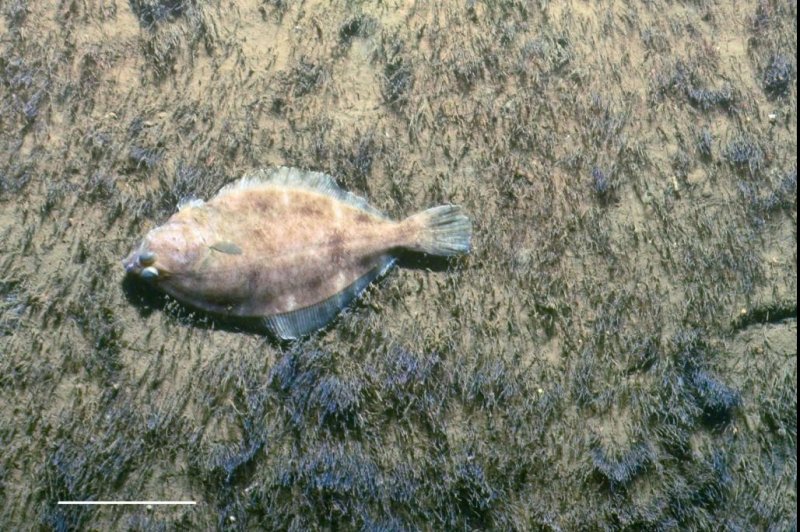Plaice, an Arctic flatfish, scoots across a methane seep covered in chemosymbiotic worms. Photo by CAGE
LONGYEARBYEN, Denmark, Aug. 10 (UPI) -- A new study offers a glimpse of an unusual marine community -- a niche ecosystem surrounding Arctic cold seeps.
Researchers with CAGE, the Centre for Arctic Gas Hydrate, Environment and Climate, found a wealth of specialized life forms surrounding colds seeps on the seabed off the coast of Svalbard, a Norwegian archipelago in the Arctic Ocean.
Beneath the Svalbard seabed are large gas reservoirs. Life forms surrounding cold seeps rely on escaping methane and other hydrocarbons as a fuel sources. The carbons are converted to nutrients by microbes using a process known as chemosynthesis, a substitute for photosynthesis.
Scientists described the unique methane-dependent communities in a new paper, published this week in the journal Marine Ecology Progress Series.
"For the first time, we have documented that methane seepage clearly influences faunal communities on the bottom of the ocean in high Arctic areas around Svalbard Archipelago," Emmelie Åström, lead study author and CAGE PhD candidate, said in a news release.
The most abundant life form surrounding the Svalbard vents are chemosymbiotic worms, named Siboglinids. They rely on microbes to convert the methane into usable food. Siboglinids are closer relatives of larger hydrothermal vent worms.
Unlike warm hydrothermal vents, cold seeps release gas at roughly the same temperature as the surrounding water. Cold seeps are supplied by a methane hydrate, a subsurface ice-like reservoir of gas stabilized by the deep Arctic's cold temperatures and high pressure.
Though the methane seeps can encourage an intense flourish of biological activity on an otherwise barren stretch of sea floor, researchers say they don't promote much biodiversity.
Scientists are now trying to model the effects of rising ocean temperatures on niche ecosystems like cold seeps.
"This study gives us key observations in a high Arctic location that is likely to be affected by warming ocean temperatures," Åström said. "This in turn may lead to increased methane release from gas hydrates under the sea floor. How biological communities react and consume this methane is extremely important to understand."















